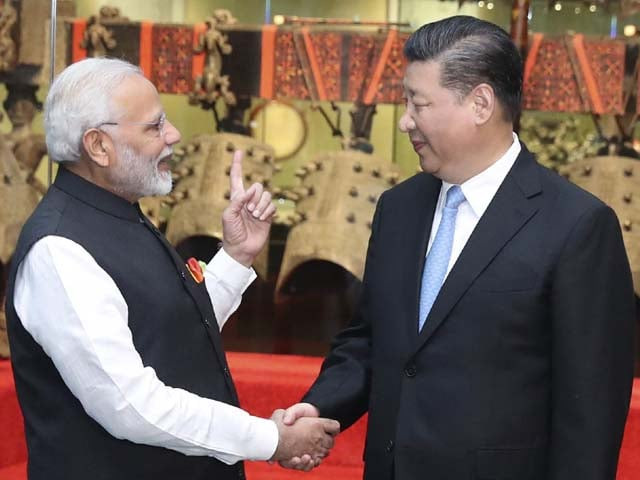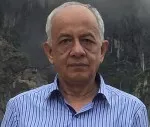In a unilateral and a surprise move on the intervening night of June 16-17 2020, the Chinese People’s Liberation Army (PLA) entered the Galwan Valley Region, in the Eastern Ladakh, on the Indian side of the Line of Actual Control (LAC). The Chinese incursion was built on the premise that India would not be able to take on the might of the Chinese army. The Indian soldiers stopped the Chinese from making grounds on the Indian side of the LAC. This lead to a hand to hand combat, where over 25 Indian soldiers lost their lives, and an unspecified number of Chinese soldiers died.
China has refused to disclose the actual number of casualties, but the editor-in-chief of the Global Times in a tweet stated that there were far fewer deaths than India. This is the only admission that has so far come from China. This was probably the worst crisis after the 1962 Sino-Indian war, where China had captured 45,000 sq.km of Indian land.
In an effort to de-escalate the tension, both India and China have so far held eight rounds of talks at the senior Army commanders’ level. Like in the earlier talks, nothing concrete has emerged except issuing a blasé statement on the importance of preserving peace and stability in the region. At the diplomatic level, despite 28 rounds of border talks between the special representatives, the dispute is nowhere near a resolution. India believes that China is playing hardball with India and is not serious enough to resolve the border issue.
India shares a 3488 km border with China and there has not been a major incident till the incursion took place in 2020. There has been calm at the border since the Indo-Sino war of 1962. In June 2017, in a unilateral move, the China’s People Liberation Army (PLA) had intruded into the Doklam plateau, in Bhutan, to construct a road. Although India was not a party to the dispute, the construction of a road at the tri-junction would have brought the Chinese closer to the vulnerable Chicken’s Neck (also known as Siliguri corridor), posing as a security challenge for India. In the event of a conflict, the Chinese army had the potential to cut off North- Eastern India with its mainland, through the Chicken’s Neck. Alarmed with the development, the Indian soldiers had physically stopped the advancing PLA from entering in to the disputed region. India asserts that the Chinese intrusion was a clear violation of a written understanding of 2012, between the Indian and the Chinese representatives that all disputes would be resolved through dialogue.
At the intervention of the Indian Prime Minister and the Chinese President, both the countries agreed to withdraw the troops in what otherwise could have escalated to a full-fledged conflict between the two countries.
India is also wary of China’s perceived expansionist policies in the region. There are unconfirmed reports that China has already made inroads both in Bhutan and Nepal. Satellite images show that it has built a village inside Bhutan. Many experts on India and China believe that the Chinese have made inroads in the Depsang plateau, on the Indian side of the LAC. The Indian side has denied such claims.
To counter China, in both Southeast India and South Asia, the former Japanese Prime Minister Shinzo Abe had, in 2007, initiated an informal strategic forum popularly known as the Quadrilateral Security dialogue consisting of Japan, the United States, Australia and India. The Quad was rejuvenated in 2017 in Manila ahead of the ASEAN summit, for creating a security structure, primarily to counter China. Initially, India was wary to open a front with China, but after the Doklam incident, India has now shown seriousness in strengthening the Indo-Pacific forum. Recently, it held a joint naval drill called the ‘Malabar military drill’ in the Indian Ocean where, besides India, the United States (US), Japan and Australia also participated.
India also realises that in the event of a war, the members of Quad would not stick their neck out to come to India’s rescue, as none of the members can impose costs on China. However, the Quad, in collaboration with other countries, can, at best, help in moderating China’s behaviour by emphasising that if it has visions of becoming a global player it needs to act responsibly.
However, India also realises that, in the aftermath of the recent clashes, it can no longer remain a passive bystander and has taken steps to strengthen its defence capabilities and also to reduce the growing power differential with China, which, today, is five times militarily stronger than India.
In the “Elements of the China Challenge,” a policy brief released by the US office of the Secretary of State in November 2020, 10 tasks have been recommended for tackling China. The US is worried that if the Chinese are not stopped in their tracks, they will continue their expansionist policies, both in the South China Sea and also at the Indian border. The policy document also refers to China’s larger design to forcibly reunify Taiwan with its Mainland.
There are several reasons behind China’s confrontational attitude with India. Firstly, it resents the fact that unlike its other neighbours, India has refused to join the Belt and Road Initiative, a pet project of the Chinese president. Secondly, China does not see India as an equal contender on the world stage, and looks upon India more like a junior partner. Thirdly, it has shown displeasure to India joining the Indo-Pacific Forum (Quad), as it views the forum has been formed to check China from becoming a global power. Russia, which has excellent relations with India, is also resentful of India joining the Quad. It is precisely for this reason that it has recently postponed the annual summit with India for the first time since 2000 when the “Declaration on the India-Russia Strategic Partnership” was signed between both the sides. India is also not happy with Russia’s attempts to forge ties with Pakistan, which, like China, is seen by the Indian state as being hostile. Moreover, India knows that a Russia-Pakistan-China axis would be detrimental to its security in the region.
In sum, India should adopt a two-pronged strategy to deal with an assertive China. India should continue to engage with China, both at the military and diplomatic levels, even if such talks do not result in any immediate results. India also needs to modernise its military to reduce the gap with China because, in the event of a war, the Quad members, including the US, would not stick their necks out to defend India. It is therefore, from an Indian perspective, of paramount importance that India strengthens its defence preparedness to meet any contingencies in the event of a conflict. Both the countries should realise that any war or conflict is a zero-sum game which can bring untold destruction and misery to the people of both countries. India is also aware of the fact that in this context it would be prudent for India to continue to engage both militarily and diplomatically with China and, at the same time, shore up its defence preparedness to deal with any future designs of China.



COMMENTS
Comments are moderated and generally will be posted if they are on-topic and not abusive.
For more information, please see our Comments FAQ